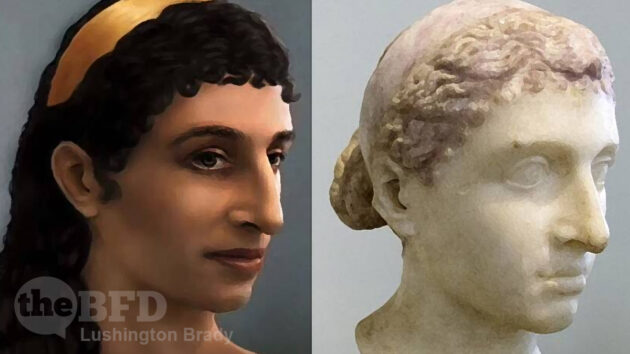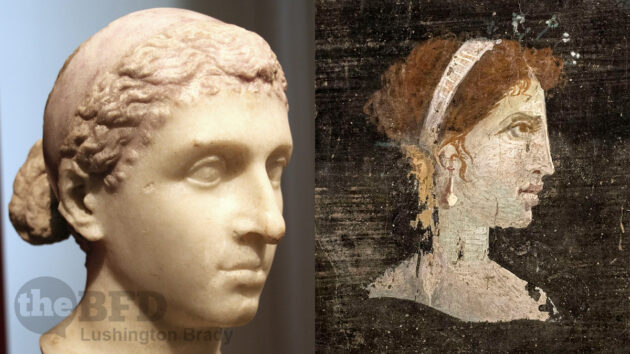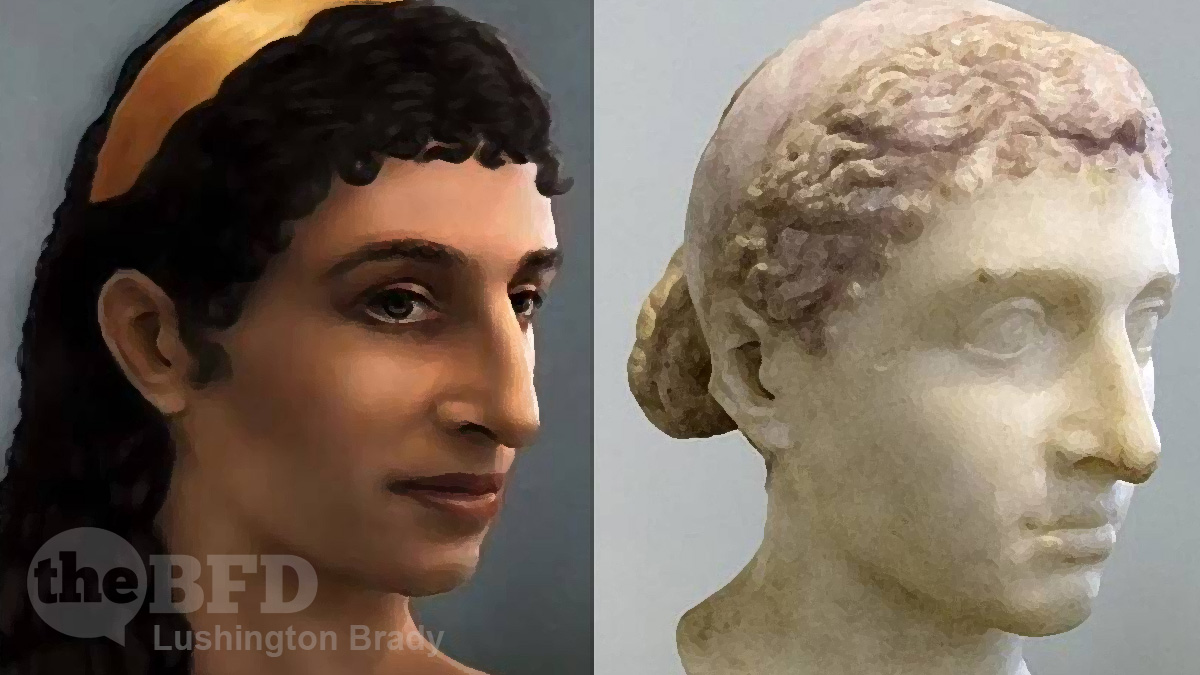The fascination with Cleopatra, Egypt’s penultimate pharaoh, has endured for over 2000 years. Her magic seems unlikely to fade away soon. The Queen of the Nile entranced the most powerful men of her day. Today, she inspires as heated arguments as she did when Julius Caesar fell under her spell.
But what did she look like?
Depending on who you turn to, she was either a luminous beauty à la Elizabeth Taylor, or a plain but somehow irresistible woman. Either way, she managed to dazzle two of the most powerful men in the world.
When Cassius Dio describes Cleopatra meeting Caesar, he portrays the Egyptian queen as “brilliant to look upon and to listen to, with the power to subjugate every one, even a love-sated man already past his prime.” Dio also describes Caesar as “completely captivated” when he first meets the royal. Cleopatra, Dio declares, was “a woman of surpassing beauty.”
Which seems like a hands-down argument. Until we turn to Plutarch.
In describing Cleopatra’s meeting with Mark Antony, the Greek writer noted that “she was going to visit Antony at the very time when women have the most brilliant beauty and are at the acme of intellectual power.” But he also goes on to describe Cleopatra’s real face in less flattering terms.
“For her beauty, as we are told, was in itself not altogether incomparable,” he wrote, “nor such as to strike those who saw her; but converse with her had an irresistible charm, and her presence, combined with the persuasiveness of her discourse and the character which was somehow diffused about her behavior towards others, had something stimulating about it.”
Plutarch continued, “There was sweetness also in the tones of her voice; and her tongue, like an instrument of many strings, she could readily turn to whatever language she pleased…”
Other Roman contemporaries found her considerably less charming.
The first-century poet Horace described her as “a crazy queen… plotting… to demolish the Capitol and topple the [Roman] Empire”[…]
Many people in modern times believe that Cleopatra was the ultimate seductress, but this image may be nothing more than propaganda originally pushed by Roman Emperor Octavian — who wanted to portray his rival, Antony, as someone who’d fallen into the trap of a foreign femme fatale.
Eager to support Octavian’s version of the story, many Roman historians may have described Cleopatra the way they did simply because it corresponded with their narrative of a wicked temptress.
All That’s Interesting
The few physical depictions of Cleopatra may not be the best guides. Roman coins look distinctly Romanised, while Egyptian monuments likewise are distinctly idealised by Egyptian tastes.
A possible posthumous portrait depicts Cleopatra as distinctively Macedonian: her family, the Ptolemies, were after all Greek Macedonian conquerors who had ruled Egypt since the death of Alexander the Great. A Roman bust bears a distinct likeness to that portrait – and hardly seems the great beauty some might have hoped. A modern reconstruction based on the bust is more flattering, but still seems more striking than pretty.

One thing we can say with almost certainty is that, no matter what revisionists might want to believe, Cleopatra was not “black”.
This controversy flared anew recently, when Israeli actress Gal Gadot was announced to play Cleopatra in a new movie. The mini-minds of Twitter went into a race-hustling meltdown, claiming that “Cleopatra was black!”
This is nonsense, of course.

Even if the Macedonian Ptolemies had intermarried with native Egyptians, we already know that those Egyptians most certainly were not black, either. DNA investigations have shown that the Ancient Egyptians shared almost no sub-Saharan (i.e. black) African ancestry. Even today, the proportion of sub-Saharan African genes in Egypt remains minimal.
Cleopatra, with Macedonian and maybe native Egyptian heritage, would almost certainly have been distinctly Mediterranean: olive-skinned or tanned, and black or red-haired.
In any case, does it really matter what she looked like? Cleopatra’s enduring legacy ought to be that of a supremely skilled head of state and diplomat, at a time when women almost never held significant political power.
Please share this article so that others can discover The BFD

